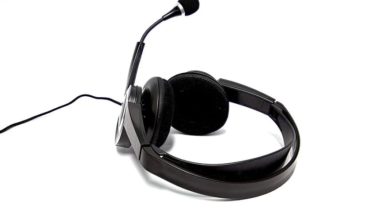Virtual Reality (VR) is primarily known for entertainment and gaming. But its ability to create a fully immersive experience for consumers allows it to be used in other industries as well, such as virtual field trips for education and training for emergency responses. However, there is currently no one VR headset that is suitable for all purposes.
Ultimately, the device you buy will depend on what you’ll use it for. Here are a few things to keep in mind when choosing the right VR headset:
Design
VR headsets come in a myriad of designs. The simplest one is the Google Cardboard, which is a headset that’s literally fashioned from cardboard and a pair of plastic magnifying lenses — using a smartphone as a screen. They’re most suited for watching 360-degree videos. Unfortunately, the easier they are to disassemble, the more uncomfortable they tend to be — and the worse they are at blocking out the real world.
Mid-range VR headsets are still phone-powered, but are more comfortable and have more sophisticated built-in controls and tracking sensors. Samsung’s Gear VR uses a similar technology as the popular Oculus Rift, but it’s not as powerful. Nonetheless, it’s a good entry-level and relatively affordable way to explore VR.
Meanwhile, high-end VR headsets usually come in a compact, comfortable, and well-designed body. This is because today’s premium VR headsets come with the latest PCB technology, allowing the devices to generate breathtaking graphics without the bulk that’s usually associated with powerful hardware. However, this means that this equipment is typically tethered to a separate computer or game console.
Controller
VR apps will have different controls. Google Cardboard-compatible apps need only one input. Commonly, these headsets will have a hole big enough for a finger or thumb to tap directly on the screen. However, some models like the Homido VR headset don’t come with a controller at all – thanks to apps that use tracking sensors – so you can choose from the menu using only your eyes or head gestures. Unfortunately, this means you can only perform simple and slow actions.
Mid-range headsets give you more control. You can pair a Bluetooth game pad to a smartphone and use that as a control system. But this makes for a clunky, inconsistent experience, not to mention having extra equipment to handle. Samsung’s Gear VR, however, has the best controls among mid-range headsets as it has a trackpad on the side of the headset.
High-end headsets frequently make use of motion sensors and the game pad — so much so that these devices have their own sets. For instance, the Oculus Rift typically ships with an Xbox One controller, the PSVR uses PS4 controllers, and Vive has its own specially designed controller.
Hidden costs
Aside from buying the actual headset, you might find that you’ll need to pay more to maximize your use of the equipment. While most affordable headsets are compatible with smartphones, older phones may not be able to handle Cardboard apps well.
The biggest hidden costs here would be the Gear VR and LG 360 VR working only with the newest Samsung and LG phones, which means you’ll need to upgrade your unit if you want to use such headsets. Similarly, other mid-range headsets like the Zeiss VR One are compatible with iPhones.
On the other hand, the not-so-hidden hidden costs for high-end headsets are the controllers. The extra equipment and accessories will make using these headsets more expensive, but they enhance the experience and ease of using the apps.
Choosing the right VR headset is difficult. However, paying attention to the above points can help you narrow down your options and find the best model for you.




